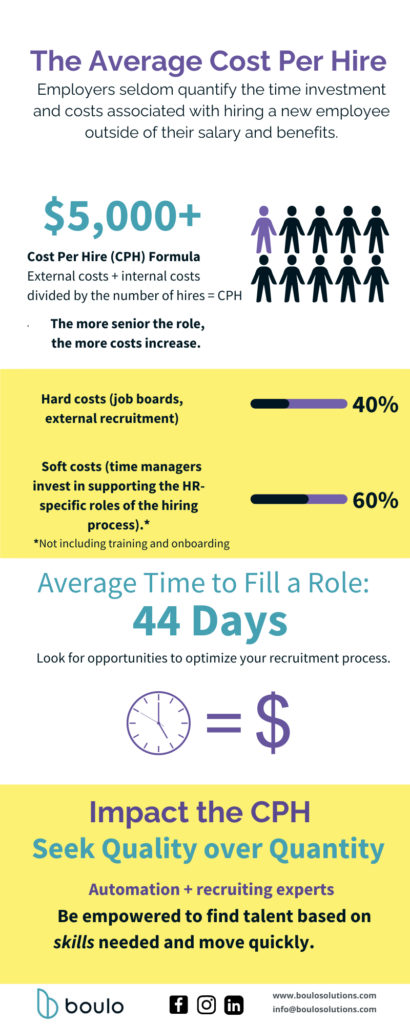Have you ever stopped to consider the true cost of hiring a new employee? Beyond the salary and benefits package, there are numerous expenses that can quickly add up, impacting your bottom line. For human resource professionals and small business owners, understanding these costs is crucial for making informed hiring decisions and optimizing the recruitment process. In this article, we’ll delve into the financial implications of hiring, explore common expenses, and discuss strategies for streamlining the process.
The Cost of Hiring:
On average, hiring a new employee in the United States costs around $5,000 – and the more senior the role, the more costs increase. This figure encompasses various expenses, including advertising the job, job boards, conducting interviews, and background checks. It does not include things like onboarding and training, and additionally, there are indirect costs associated with lost productivity during the transition period and potential disruptions to team dynamics. For small businesses with limited budgets, these expenses can be particularly burdensome, highlighting the importance of efficient hiring practices.
Time is Money:
In addition to the financial outlay, the hiring process also requires a significant investment of time. Research indicates that it typically takes about 44 days to fill a vacant position, from posting the job to extending an offer. During this time, HR professionals and hiring managers must dedicate hours to reviewing resumes, scheduling interviews, and assessing candidates. Meanwhile, the vacancy may result in decreased productivity and increased workload for existing team members.
Strategies for Optimization:
To mitigate the costs and time associated with hiring, organizations can implement several strategies:
Streamlined Recruitment Process:
By refining your recruitment process, you can expedite the time-to-hire and reduce associated expenses. This may involve leveraging technology such as applicant tracking systems (ATS) to automate repetitive tasks, standardizing interview processes, and utilizing pre-employment assessments to identify top candidates efficiently. Many companies are using a skills-based approach to hiring in 2024.
Effective Employer Branding:
Building a strong employer brand can help attract qualified candidates while minimizing recruitment costs. Showcase your company culture, values, and employee benefits through your website, social media channels, and employer review sites. A positive employer brand not only attracts talent but also reduces turnover by fostering employee satisfaction and loyalty.
Leveraging Innovative Solutions:
Embracing innovative solutions such as online recruiting platforms can streamline the hiring process and lower costs. Platforms like Boulo Solutions connect employers with a diverse pool of pre-screened candidates, reducing the time and resources spent sourcing and screening applicants. By leveraging a skills-first hiring approach, these solutions enable more efficient and targeted hiring decisions.
In today’s competitive labor market, the cost of hiring goes beyond the monetary investment—it encompasses time, resources, and productivity. For human resource professionals and small business owners, optimizing the recruitment process is essential for maximizing efficiency and minimizing expenses. By implementing strategies such as streamlining recruitment processes, enhancing employer branding, and leveraging innovative solutions, organizations can reduce hiring costs while attracting and retaining top talent.
View our infographic on the cost of hiring in 2024.


